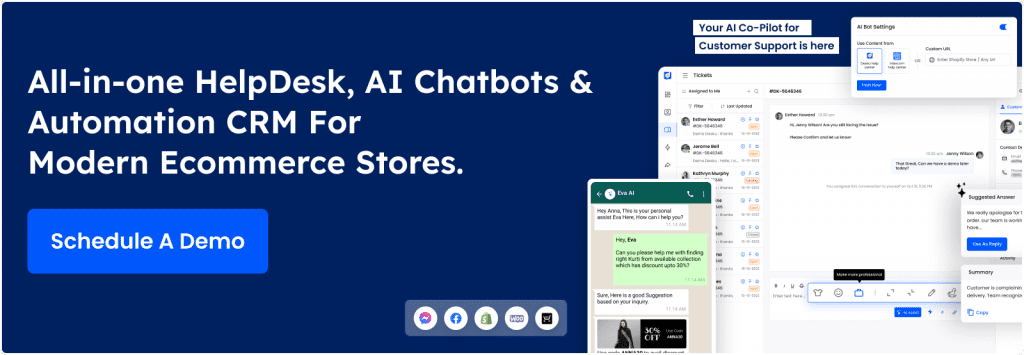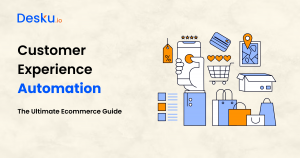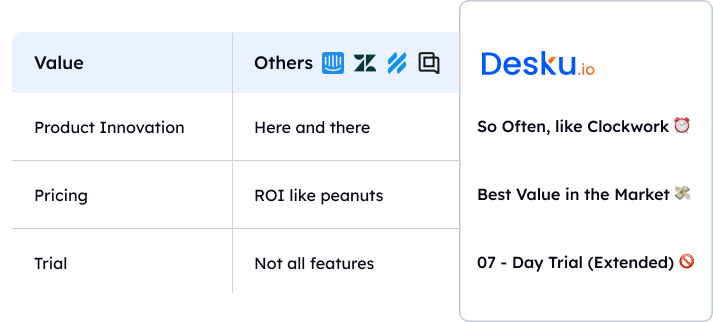In a sea of blog posts bombarding you with eCommerce conversion tactics aimed at boosting your sales, it can feel tough to pinpoint the strategies truly worth your focus. We’ve taken the burden off your shoulders by carefully selecting the most effective strategies guaranteed to capture your shoppers’ attention and encourage them to make a purchase and increase ecommerce conversion rate for your store.
This guide explains 14 practical strategies designed to help your online store shine amidst the competition and enchant shoppers, making them loyal fans of your brand. Each tactic is tailored to improve your eCommerce conversion game, ensuring you not only attract customers but also convert their interest into sales.
How to Calculate eCommerce Conversion Rate: Explained
An e-commerce conversion rate measures the proportion of visitors to your online store who complete a purchase. To determine your site’s conversion rate, apply the following calculation.
For instance, if your website secures 40 sales from 2,000 visitors:
40 divided by 2,000 equals a 2% conversion rate.
Typically, e-commerce sites see an average conversion rate ranging from 1% to 4%. Enhancing your ecommerce site’s conversion rate by just 1% or 2% could potentially lead to a doubling of your total sales.

How to Increase Ecommerce Conversion Rate: 14 Strategies
1. Streamline Your Store’s Layout & Navigation
Top-performing eCommerce sites share a common trait: a straightforward and easily navigable layout. A ‘flat’ structure, which means minimizing the number of clicks from the homepage to any desired page to as few as possible, ideally within three clicks, is crucial for a user-friendly experience.
The journey from landing pages to product selections and finally to the checkout should be effortless, encouraging purchases by removing any potential friction. Complex site designs can deter shoppers, similar to the effect of slow loading times, leading to increased abandonment rates.
Enhancing your site’s navigation can involve several tactics, such as including breadcrumb trails, decluttering menu options, and rearranging site elements for priority access. Tailoring these adjustments to fit the unique needs of your eCommerce platform is essential for optimal results.
Consider the case of Slideshop, which, upon analyzing user interaction data, identified a lack of engagement with subcategories. To tackle this, they executed an A/B testing on their sidebar navigation, shifting from a promotional right sidebar to a more intuitive left-hand navigation.
The change not only simplified the transition from categories to subcategories but also led to a significant 34% increase in add-to-cart clicks, illustrating the direct impact of streamlined navigation on sales conversion rates for eCommerce sites.
2. Use urgency and scarcity to boost sales
Utilizing the psychological triggers of scarcity and urgency can significantly amplify e-commerce conversions. When customers realize that the items they are interested in are in limited supply or part of an exclusive collection, their desire to acquire increases markedly.
This sense of scarcity not only grabs their attention but also heightens their excitement about what you have to offer. Moreover, introducing urgency by indicating that certain deals are available only for a limited time encourages shoppers to act swiftly to take advantage of these offers before they’re gone.
3. Reverse engineer your customer’s journey
Understanding the customer journey is about mapping out the process a potential buyer undergoes, from initial interest in your niche and brand discovery to learning about your products and finalizing a purchase.
While this journey is often depicted as a straightforward, linear progression through five stages from awareness to retention, the reality is far more complex. Customers might bypass steps, make impulsive purchases, or navigate away from your site without returning.
However, tools like Google Analytics offer invaluable insights into the path visitors take within your e-commerce store, highlighting entry points, drop-off locations, and popular pathways to purchase. Custom dashboards in Google Analytics can visualize customer movement, pinpointing opportunities for optimization and A/B testing to address specific challenges along the customer journey.
4. Your product pages Must have relevant copy and descriptions
The art of crafting compelling product descriptions and engaging copy is central to forging strong connections with customers. The goal on product pages is not to overwhelm visitors with excessive information but to provide all necessary details succinctly and accessibly. Achieving this balance ensures customers have enough information to make informed decisions without seeking details elsewhere.
Effective copywriting can adopt a playful tone if it aligns with your brand, drawing on positive customer testimonials for language that resonates with your target audience, as seen in engaging examples from e-commerce platforms like Woot. This approach speaks directly to customers in their language, enhancing the likelihood of conversion.

5. Make your site load as fast as possible
Boosting your site’s speed is a straightforward yet powerful way to enhance conversion rates. The logic is simple: slow-loading pages frustrate visitors, leading them to abandon your site. Studies, including those by giants like Amazon, underscore the critical impact of milliseconds of delay on revenue, with every 100 ms of latency potentially reducing sales by 1%.
Investigations into page speed reveal that e-commerce sites witness the highest conversion rates when pages load within 0-2 seconds. Prioritizing speed optimization for high-traffic pages such as the homepage, product, category, checkout, and login pages is essential for keeping potential customers engaged and willing to make a purchase.
6. Personalizing the Shopping Experience
Modern customers expect shopping experiences that cater directly to their preferences. Leveraging data on customer behavior enables e-commerce sites to refine and personalize the online shopping journey. Starting with basic steps like suggesting similar or related products can significantly enhance the user experience without requiring extensive data from new visitors.
Advanced tactics, such as utilizing user cookies for displaying previously viewed products or employing geo-targeting for location-specific personalizations, further enrich the shopping experience, making it more relevant and engaging for each visitor.
7. Experimenting with Pricing Strategies
Research into consumer spending habits, like that conducted by the University of Pennsylvania, reveals varied attitudes towards spending, categorizing shoppers into tightwads, unconflicted, and spendthrifts.
Understanding these classifications helps in tailoring pricing strategies to convert hesitant buyers. Strategies like offering free shipping and returns have shown to be effective in persuading customers to complete their purchases. eCommerce platforms like Zalora found emphasizing free returns could boost conversion rates by 12%.
8. Streamlining the Checkout Experience
Creating a hassle-free checkout process is essential for converting browsers into buyers. Although there’s no universal solution, simplifying the process generally entails minimizing the steps required to complete a purchase, eliminating distractions on checkout pages, offering various payment options, and enabling guest checkout to expedite transactions.
These adjustments make the checkout experience less daunting and more inviting for customers. For a deeper dive into enhancing your checkout page, addressing common issues identified by research, like that from Baymard Institute, can further refine the process and boost your eCommerce conversion rate.

9. Expanding Payment Options
Offering a diverse range of payment methods can significantly lower barriers during the checkout process, appealing to a wider audience with varied preferences for trusted payment solutions. A broad spectrum of payment options can recover up to 30% of transactions otherwise lost to card declines.
While simplicity remains paramount in the checkout process to avoid overwhelming customers visually, accommodating as many payment types as possible caters to varied customer needs without complicating the user experience.
10. Implementing Live Chat Support
The introduction of live chat functionalities on your e-commerce site serves a dual purpose. First, it actively reduces the likelihood of potential customer drop-offs by ensuring that shoppers have instant access to help, right at the moment they need it.
Whether they’re confused about product specifications, payment options, or delivery details, live chat provides an immediate connection to the answers they seek, significantly reducing the frustration that can lead to abandoned carts.
Second, live chat sustains a crucial element of human interaction in the otherwise impersonal digital shopping landscape. Even for customers who may navigate through your site without initiating a chat, the mere presence of a live chat option acts as a safety net, providing reassurance that support is readily available should they need it. This layer of reassurance is invaluable, as it subtly encourages shoppers to proceed with their purchases, knowing help is just a chat away.
11. Showcasing Product Reviews
With 69% of online shoppers desiring more product reviews on eCommerce sites, integrating customer feedback into product pages is crucial. Reviews serve as social proof, enhancing your store’s credibility and the perceived value of your products. This transparency helps customers make informed decisions, boosting confidence in both the items they’re considering and your brand.
12. Addressing Cart Abandonment
Cart abandonment remains a pervasive challenge, with rates fluctuating between 60-80% across different sectors. Tackling this issue head-on can directly enhance sales figures. Employing strategies like cart abandonment email sequences to remind customers of their pending items, maintaining a visible cart icon for easy navigation, and sending push notifications to re-engage customers who’ve navigated away can markedly reduce abandonment rates and encourage purchase completion.
13. Maximizing Upsell and Cross-Sell Techniques
Harnessing the power of upselling and cross-selling represents a strategic approach to boost both your conversion rate and average order value. Upselling involves encouraging customers to purchase a higher-end product or an upgraded version with additional features, while cross-selling involves suggesting complementary products alongside the initial purchase.
Both strategies aim to improve the average order value, contributing to increased revenue. Amazon exemplifies successful cross-selling, often suggesting related items to augment customer purchases. Implementing incentives like free shipping for orders above a certain threshold can further motivate customers to increase their cart size.

14. Incorporating Trust Badges on Your Website
Establishing trust is crucial, especially for emerging e-commerce sites lacking widespread brand recognition. Displaying trust badges on your site significantly enhances brand credibility, reassuring potential customers of your store’s reliability and security. Evidence suggests that trust badges on product or checkout pages can markedly uplift e-commerce conversion rates.
If you’re contemplating their effectiveness, it’s worthwhile to experiment with their inclusion. Remember to consider the type of trust badges employed—ranging from payment security to industry certifications—and their placement on your site to avoid overwhelming visitors with excessive badges, which could inadvertently detract from the user experience.
What is considered to be a good Conversion Rate in eCommerce
A good e-commerce conversion rate often falls within the range of 1% to 4%, but this benchmark can vary widely depending on the industry, product type, and market conditions. Achieving a rate closer to or above this average indicates that an e-commerce site is performing well, successfully turning a significant portion of its visitors into buyers. However, it’s crucial to understand that even a slight improvement in your conversion rate can have a substantial impact on your sales and overall business growth.
For instance, boosting your conversion rate from 1% to 2% effectively doubles your sales, highlighting the power of optimizing for conversions. The goal should always be to strive for continuous improvement, aiming to enhance the user experience, streamline the checkout process, and personalize marketing efforts to lift this key metric.
Remember, while benchmarks provide a useful guide, the “good” conversion rate is one that is improving over time. Regularly analyzing your conversion rate in the context of your specific business goals and customer behavior will provide more actionable insights than any generic benchmark could.
The pursuit of a higher conversion rate should focus on delivering value to your customers, understanding their needs and preferences, and creating a shopping experience that encourages them to complete their purchases.

Conclusion
Enhancing your e-commerce conversion rate is a multifaceted endeavor, requiring attention to user experience, site performance, and customer engagement. The 14 strategies outlined provide a robust framework for any e-commerce business looking to not only attract but also retain and convert visitors into loyal customers. By implementing these tactics, you’re setting the stage for sustained growth, increased sales, and a competitive edge over even the most fierce competitors.
FAQ: Increase Ecommerce Conversion Rate
How do I create a perfect website to Increase Ecommerce Conversion Rate?
Focus on user-friendly design, fast loading times, clear product descriptions, and a seamless checkout process to create a high-converting e-commerce website.
What increases conversion rate?
Improving site speed, optimizing product pages, simplifying the checkout process, and personalizing the shopping experience can significantly increase conversion rates.
What are the four main strategies of conversion?
The four main strategies include optimizing website navigation, enhancing user experience, using persuasive calls-to-action, and conducting regular A/B testing.
Does conversion rate help SEO?
While conversion rate itself doesn’t directly influence SEO, the improvements made to enhance conversions, like site speed and user experience, can positively affect your site’s search engine ranking.













